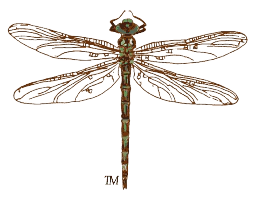Nature’s Nighttime Pest Patrol
Photo courtesy Betsy Cross
Tina Adkins
Early May through mid-June has finally brought the measurable rain so badly needed by our aquifers, plants, and wildlife. But with all that moisture comes a challenge: rain-filled barrels, trays, and grasses become ideal breeding grounds for pesky chiggers and mosquitoes, which flourish from March through November in Central Texas.
One of nature’s premier consumers of mosquitoes belongs to the Order Chiroptera, or the “Flying Hand.” Beginning at dusk, four greatly elongated fingers spread wing membranes, allowing bats to fly—usually heading first to the nearest water source to dip their jaws for a drink. Then the hunt is on. These insectivores catch meals in their mouths or scoop them into their wings or interfemoral membranes (located between the legs). This small, unassuming nocturnal creature is the only mammal capable of true flight: the bat. What an extraordinary animal—able to consume up to 1,000 mosquito-sized insects in a single hour, including as many as 15 different mosquito species, 9 of which can carry the dangerous West Nile virus.
Birds flap their wings up and down, while bats “swim” through the air. Some species are very agile—similar to a Chimney Swift—with wingbeats around 20 per second. They feed in flight, often turning somersaults as they transfer food from their wings to their mouths. If a meal is super-sized, dining while “hanging out” is preferred. Legend has it that bats fly into people’s hair to chase insects swarming above their heads. Though well-furred bats may fly quite close, they are aiming for the insects—not your hair.
Photo courtesy Betsy Cross
Although bats have relatively poor eyesight, they excel at echolocation. By emitting rapid supersonic sounds through their noses or slightly open mouths, and adjusting ear muscles to block outgoing sounds and receive echoes, they can determine an object’s size, location, density, and movement. Their specially adapted ears make them highly effective nighttime hunters.
At least seven unique bat species live in Texas, including:
Big Brown Bat
Brazilian Free-tailed Bat (commonly called the Mexican Free-tailed Bat)
Cave Myotis
Eastern Pipistrelle (the smallest bat in the East)
Evening Bat
Ghost-faced Bat
Hoary Bat (the largest bat in the East)
Red Bat
Most bats hibernate in winter, while others migrate up to 1,000 miles. For instance, the Cave Myotis migrates shorter distances between seasonal roosts—choosing caves, mines, or buildings in summer and only caves in winter. One was recorded hibernating in a ceiling crevice at West Cave Preserve from November 2014 to February 2015.
Free-tailed bats are named for their tails, which extend beyond the edge of the interfemoral membrane, leaving half of the tail “free.” Their thumbs and toe claws have double talons—unique among bats. The Brazilian Free-tailed Bat, although the smallest free-tailed species, is the most abundant in the Southwest. With an estimated 100 million individuals in the U.S., it’s the most numerous mammal in the country.
Experience the “Batnado” at Bracken Cave
Bracken Cave Preserve in Texas is home to the world’s largest bat colony, with a summer population estimated at 15 to 20 million. Watching them emerge at sunset is breathtaking—they resemble a swirling tornado of wings, forming dark clouds that stream for hours as they consume vast quantities of insects like moths, ants, beetles, and leafhoppers.
https://www.batcon.org/experience-bats/bat-happenings/visit-bracken-cave-preserve/
Photo courtesy Tina Adkins
Bats save U.S. farmers an estimated $23 billion annually by protecting crops such as rice, macadamia nuts, corn, cotton, cocoa, and coffee. A single bat can eat up to one-third of its body weight in insects each night. A colony of 250,000 bats can consume half a ton of pests in one evening. Extrapolated, that’s about 15,000 tons per night from Bracken Cave alone—an incredible contribution to ecosystem health and agricultural sustainability.
Beyond pest control, bats also play a key role in pollination and seed dispersal. While we often associate pollination with bees, butterflies, and birds, some bats—thanks to their large “mastiff-like” faces—are highly effective pollen collectors and distributors. Their droppings, or guano, also have historical and practical value. During the Civil War, guano was mined as a source of sodium nitrate for gunpowder and continued to be used as fertilizer through the 1940s. Today, it remains a powerful natural fertilizer and an excellent compost addition when accessible.
Unfortunately, like many wildlife species, bat populations are in decline. Habitat loss, including reduced forest cover and fewer caves for roosting and raising young, along with human fear and persecution, pose serious threats. In addition, white-nose syndrome—a deadly fungal disease first identified in 2006—has devastated bat colonies across North America.
So what can we do to help support bat populations? One option is to install artificial roosts in safe locations. Brazilian Free-tailed Bats are some of the most frequent users of bat houses, making this a valuable conservation tool. One local Boy Scout from Troop 280, Benjamin Seshan, completed his Eagle Project by building two bat houses at Dripping Springs Ranch Park (DSRP), where bats had been seen trying to roost in the main facility. Bat houses have also been installed at West Cave Preserve by Merlin Tuttle’s Bat Conservation (www.merlintuttle.org/i-want-to-help/), led by one of the world’s foremost bat experts.
A Master Naturalist project is currently deploying bat acoustic monitors across Hays County to study bat populations. Additionally, a new citizen science initiative will launch this summer to monitor bats at Dripping Springs Ranch Park. Community members are invited to help observe and count bats on the first Friday of each month at the newly installed bat houses. Stay tuned for details on the DSRP Nature Programs website.
Photo courtesy Betsy Cross




